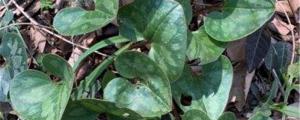How Far Apart Should You Plant Mastic Trees?
Mastic trees, also known as Pistacia lentiscus, are native to the Mediterranean region and are commonly grown for their resin, which is used in various cosmetic products and as a flavoring agent in food. These trees are also valued for their ornamental appeal and their ability to thrive in hot, dry climates. If you're planning to grow mastic trees in your garden or orchard, it's important to know how far apart you should space them to ensure optimal growth and productivity.
Spacing Considerations for Mastic Trees
The ideal spacing for mastic trees depends on several factors, including the specific variety you're planting, the climate and soil conditions in your area, and your intended use for the trees. In general, most varieties of mastic trees require a spacing of at least 10-15 feet between trees to allow for adequate growth and development.
If you plan to use the mastic trees for resin production or for their ornamental appeal, you may want to space them closer together to create a denser, more visually appealing canopy. However, if you're planting mastic trees for commercial purposes or for orchard cultivation, it's important to space them further apart to allow for optimal sunlight, air circulation, and nutrient uptake.
Tips for Planting Mastic Trees
When planting mastic trees, it's important to choose a sunny location with well-draining soil to ensure optimal growth and development. Be sure to water the trees regularly until they become established, and fertilize them with a balanced fertilizer to encourage healthy growth and resin production.
In addition, mastic trees require periodic pruning to maintain their shape and maximize resin production. Prune the trees in late winter or early spring to remove any dead or diseased branches, and to thin out the canopy to allow for better sunlight and air circulation.
Benefits of Growing Mastic Trees
There are many benefits to growing mastic trees, both for personal and commercial use. These trees are prized for their ornamental value, with their dense foliage and attractive bark providing a unique and eye-catching addition to any landscape.
In addition, mastic trees are often grown for their resin, which is used in a variety of cosmetic products, including perfumes, soaps, and beauty treatments. The resin is also used as a flavoring agent in food and beverages, adding a distinctive and pleasant taste to many dishes.
Moreover, mastic trees are known for their ability to withstand hot, dry climates and poor soil conditions, making them an ideal choice for arid regions and drought-prone areas. The trees are also resistant to pests and diseases, making them low-maintenance and easy to grow.
Conclusion
Overall, mastic trees are an excellent choice for gardeners and farmers looking for a versatile and easy-to-grow plant that offers a variety of benefits. By following the proper spacing guidelines and care instructions, you can ensure that your mastic trees thrive and provide you with years of enjoyment and productivity.

 how many times do yo...
how many times do yo... how many planted tre...
how many planted tre... how many pine trees ...
how many pine trees ... how many pecan trees...
how many pecan trees... how many plants comp...
how many plants comp... how many plants can ...
how many plants can ... how many plants and ...
how many plants and ... how many pepper plan...
how many pepper plan...





























